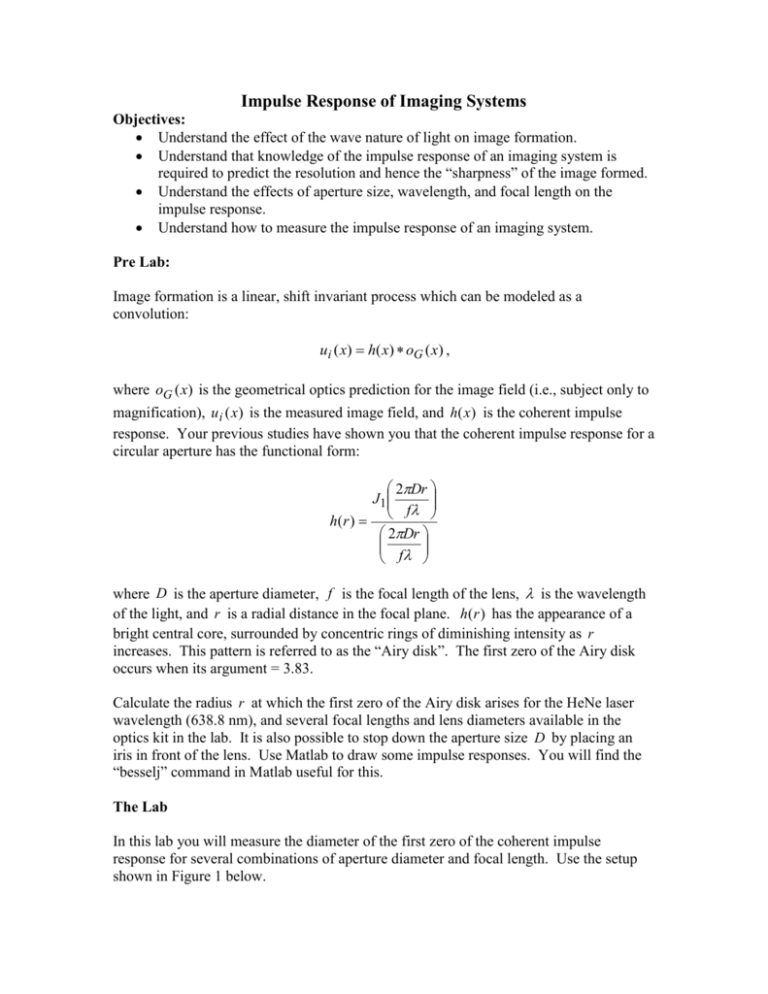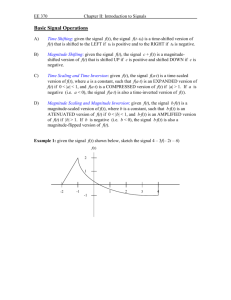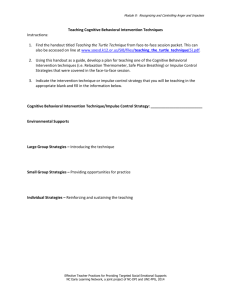Impulse Response of Imaging Systems
advertisement

Impulse Response of Imaging Systems Objectives: Understand the effect of the wave nature of light on image formation. Understand that knowledge of the impulse response of an imaging system is required to predict the resolution and hence the “sharpness” of the image formed. Understand the effects of aperture size, wavelength, and focal length on the impulse response. Understand how to measure the impulse response of an imaging system. Pre Lab: Image formation is a linear, shift invariant process which can be modeled as a convolution: ui ( x) h( x) oG ( x) , where oG (x) is the geometrical optics prediction for the image field (i.e., subject only to magnification), u i (x) is the measured image field, and h(x) is the coherent impulse response. Your previous studies have shown you that the coherent impulse response for a circular aperture has the functional form: 2Dr J1 f h( r ) 2Dr f where D is the aperture diameter, f is the focal length of the lens, is the wavelength of the light, and r is a radial distance in the focal plane. h(r ) has the appearance of a bright central core, surrounded by concentric rings of diminishing intensity as r increases. This pattern is referred to as the “Airy disk”. The first zero of the Airy disk occurs when its argument = 3.83. Calculate the radius r at which the first zero of the Airy disk arises for the HeNe laser wavelength (638.8 nm), and several focal lengths and lens diameters available in the optics kit in the lab. It is also possible to stop down the aperture size D by placing an iris in front of the lens. Use Matlab to draw some impulse responses. You will find the “besselj” command in Matlab useful for this. The Lab In this lab you will measure the diameter of the first zero of the coherent impulse response for several combinations of aperture diameter and focal length. Use the setup shown in Figure 1 below. Figure 1: Setup for impulse response lab You will create an expanded and reasonably well collimated beam, and let this fall on a lens. This corresponds to light arriving at the lens from an infinitely distant point source, and hence is a -function input. Place the camera detector one focal length behind the lens (note – remove the lens that comes with the camera and let the light fall on the bare CCD), and measure the impulse response. Save these images to files for processing later. Information about the pixel spacing of the detectors will be made available in class. Use several different focal length lenses for measurements, and compile your data for the report. Compare your estimate of where the first zero should fall to where it actually does fall. Also, place an iris directly in front of the lens, and “stop down” the aperture by reducing the size of the iris. Note the effect on the impulse response. Make measurements of the impulse response and the iris diameter and compare the impulse response widths you measure to those you calculate. Another way to estimate the impulse response is exploit the relationship between the step response and the impulse response, i.e., a function is the derivative of a step function. In the optics lab this can be measured by arranging a “ 4 f ” imaging system – i.e., a sharp edge is placed 2f in front of the lens, and the image plane is found 2f behind the lens. The response to the edge (i.e., the “edge response”) is then measured, and differentiated to estimate the impulse response. Suitable edges will be provided in the lab. Make the necessary measurements, and compare to your measurements with the collimated beam. Deliverables Based on your experience with this lab, write a 2-4 page report discussing your technique and your findings.






